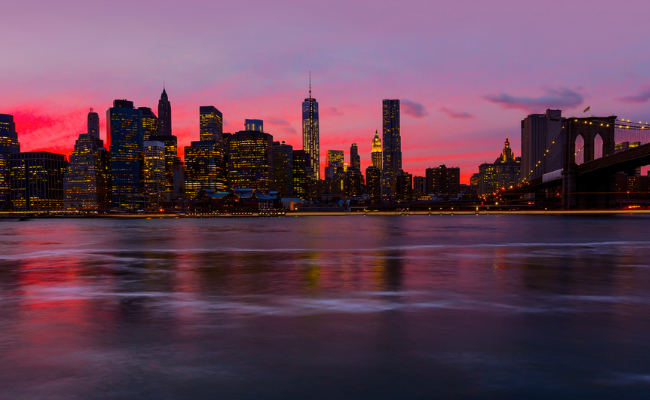NYC is sinking and some zones sink faster, NASA reveals

While there are a number movies of a sinking Statue of Liberty, no one wishes for that apocalyptic scene to come true. However, NASA reports that New York City is slowly sinking, and some cities are submerging faster than the others.
Previous reports have suggested that New York City is indeed actually sinking. This time, scientists from NASA’s Jet Propulsion Laboratory (JPL) and Rutgers University Department of Earth and Planetary Sciences found that much of the sinking is prevalent in landfills and land reclamation areas—these aren’t great for maintaining a stable and solid ground. The study was published in Science on Wednesday.
Brett Buzzing, the lead author and a postdoctoral researcher at JPL, said that a geological process called glacial isostatic adjustment is causing this sinking.
Parts of New York City are sinking faster than previously thought. Here’s what it means for sea level rise … pic.twitter.com/mqrTldXaUT
— Brut America (@brutamerica) September 28, 2023
Around 20,000 years ago, half of North America was beneath a massive ice cap. When that ice started melting, the land underneath started to rise. However, this land is returning to its original shape and sinking down.
You may also like: NASA astronaut Frank Rubio returns to Earth after completing 371-day space mission
New York City’s sinking hotspots
The study also revealed that some areas in the Big Apple are sinking more rapidly than others. The places at risk are:
- Coney Island
- Arthur Ashe Stadium
- LaGuardia Airport
- Highway 440
- Interstate 78
On a positive note, the sinking is not happening at an intense speed. NASA’s press release confirmed that the metropolitan area is sinking at an average rate of nearly 0.06 inches (1.6 millimeters) per year—roughly similar to your toenail’s monthly growth.
Researchers have found a way to determine exactly which regions in the New York City metropolitan area are sinking the fastest, according to a new study. https://t.co/l5FDpUnCOB pic.twitter.com/jQ2kJRFW6o
— ABC News (@ABC) September 29, 2023
Its impact on the future
While New York City’s sinking isn’t a direct effect of climate change, it makes the city more susceptible to future floods. The more it submerges, the more sea levels will affect NYC.
But there’s a silver lining: This study can help city planners make smarter decisions to protect the city and its residents. Plus, with modern science and cutting-edge technology, the Big Apple can stay afloat.

